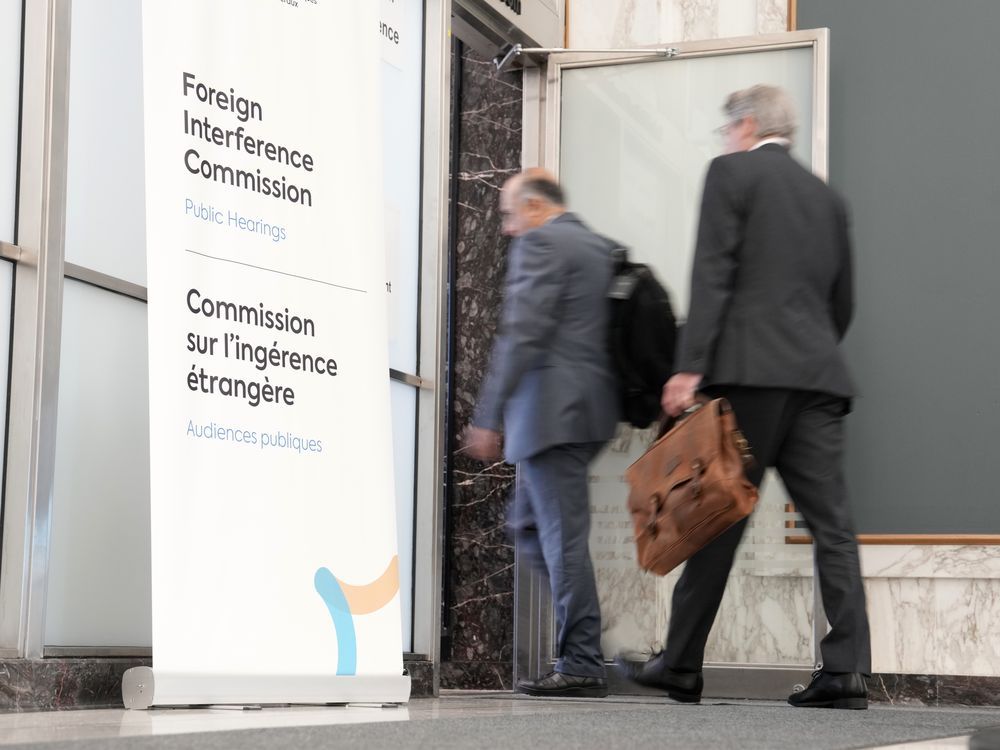Author of the article:
Associated Press
Alexis Triboulard And Melanie Lidman
Published Aug 29, 2024 • 3 minute read

HAIFA, Israel — A 4-year-old boy who accidentally broke a rare 3,500-year-old jar in an Israeli museum has been forgiven and even invited back, as curators hope to turn the disaster into a teachable moment.
Advertisement 2
THIS CONTENT IS RESERVED FOR SUBSCRIBERS ONLY
Subscribe now to read the latest news in your city and across Canada.
- Unlimited online access to articles from across Canada with one account.
- Get exclusive access to the Toronto Sun ePaper, an electronic replica of the print edition that you can share, download and comment on.
- Enjoy insights and behind-the-scenes analysis from our award-winning journalists.
- Support local journalists and the next generation of journalists.
- Daily puzzles including the New York Times Crossword.
SUBSCRIBE TO UNLOCK MORE ARTICLES
Subscribe now to read the latest news in your city and across Canada.
- Unlimited online access to articles from across Canada with one account.
- Get exclusive access to the Toronto Sun ePaper, an electronic replica of the print edition that you can share, download and comment on.
- Enjoy insights and behind-the-scenes analysis from our award-winning journalists.
- Support local journalists and the next generation of journalists.
- Daily puzzles including the New York Times Crossword.
REGISTER / SIGN IN TO UNLOCK MORE ARTICLES
Create an account or sign in to continue with your reading experience.
- Access articles from across Canada with one account.
- Share your thoughts and join the conversation in the comments.
- Enjoy additional articles per month.
- Get email updates from your favourite authors.
Article content
Alex Geller, the boy’s father, said his son — the youngest of three — is exceptionally curious, and that the moment he heard the crash last Friday, “please let that not be my child” was the first thought that raced through his head.
“He’s not a kid that usually destroys things, he just wanted to see what was inside,” Geller told The Associated Press.
The Bronze Age jar is one of many artifacts exhibited out in the open, part of the Hecht Museum’s vision of letting visitors explore history without glass barriers, said Inbar Rivlin, the director of the museum, which is associated with Haifa University in northern Israel.

Rivlin said the jar was displayed at the museum entrance, and that the family quickly left without finishing their visit. She wants to use the restoration as an educational opportunity and make sure they feel welcome to return.
By signing up you consent to receive the above newsletter from Postmedia Network Inc.
Article content
Advertisement 3
Article content
Geller and his family live in the northern Israeli town of Nahariya, just a few kilometres south of the border with Lebanon, in an area that has come under Hezbollah rocket fire for more than 10 months in a conflict linked to the war in Gaza.
They were spending the summer break visiting museums and taking day trips around Israel to escape the tensions, Geller said.
There were a lot of kids at the museum that day, and Geller said he fervently prayed the damage had been caused by someone else. When he turned around and saw it was his son, he was “in complete shock.”
“My wife responded faster than me, she grabbed our son to take him outside and calm him down and explain that it was not OK what had happened,” said Geller.
He went over to the security guards to let them know what had happened in hopes that it was a model and not a real artifact.
Advertisement 4
Article content
“We said, if we need to pay we will, whatever will be will be. But they called and said it was insured and after they checked the cameras and saw it wasn’t vandalism they invited us back for a make-up visit.”
Geller said his son didn’t quite understand the international interest in the broken jar, but their tight-knit community in Nahariya was following the media reports with interest and was proud of their local celebrity.
The Hecht Museum hopes to harness that interest to encourage more people to visit the museum and learn about artifact restoration.
Using 3D technology and high-resolution videos of the jar, experts plan to complete the restoration in a matter of days. It could be back on display as early as next week.
Advertisement 5
Article content
“That’s what’s actually interesting for my older kids, this process of how they’re restoring it, and all the technology they’re using there,” said Geller.
The jar, which had been on display at the museum for 35 years, was one of the only containers of its size and period that was still complete when it was discovered. It was likely used to hold wine or oil, and it dates back to between 2200 and 1500 B.C.
Roee Shafir, a restoration expert at the museum, said the repairs would be fairly simple, as the pieces were from a single, complete jar. Archeologists often face the more daunting task of sifting through piles of shards from multiple objects and trying to piece them together.
He said the restoration will take several days because they use special glue to connect just a few pieces at a time. The process will be documented for educational purposes.
Advertisement 6
Article content
Shafir, who will painstakingly reassemble the jar — even though he says he hates puzzles — still wants to keep the artifacts accessible to the public, even if accidents happen. He said it’s important for visitors to touch artifacts because that connection can inspire a deeper interest in history and archeology.
“I like that people touch. Don’t break, but to touch things, it’s important,” he said.
Geller said his son is too young to decide if archeology could be a career path. For now, he’s looking forward to visiting the museum again on Friday, as a special guest, and starting nursery school in September.
— Lidman reported from Jerusalem
Article content
.png)
 3 weeks ago
13
3 weeks ago
13































 Bengali (BD) ·
Bengali (BD) ·  English (US) ·
English (US) ·